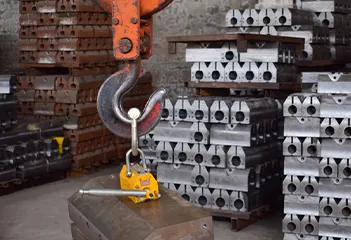rigging gantry
The Role of Rigging Gantries in Modern Industry
In the ever-evolving landscape of industrial operations, efficiency and safety are at the forefront of design and implementation strategies. One essential component that plays a critical role in various industries is the rigging gantry. These structures are not just metal frameworks; they embody the intersection of engineering ingenuity and practical utility. As industries continue to expand and diversify, the importance of rigging gantries cannot be overstated.
Definition and Structure
A rigging gantry is essentially a framework that supports lifting equipment, allowing for the safe raising and lowering of heavy materials and components. Traditionally constructed from steel, these gantries can be either fixed or movable, depending on the operational requirements. The height and width of a gantry can vary greatly, accommodating different kinds of loads and space constraints. Many designs include adjustable legs, allowing customization based on task demands.
The primary components of a rigging gantry include posts or legs, a horizontal beam or girder, and often a traveling hoist or winch. The inherent design allows for the transfer of heavy loads with minimal risk, crucial in environments where heavy machinery is a part of everyday operations.
Applications Across Industries
Rigging gantries find applications in a multitude of settings, ranging from manufacturing plants to construction sites. In manufacturing, they facilitate the movement of heavy machinery parts during assembly or repair phases. This is particularly evident in the automotive and aerospace industries, where precision in handling components is paramount.
In construction, rigging gantries provide a robust solution for lifting heavy materials to elevated heights. This capability is essential, especially in projects that involve significant structural elements, such as steel beams or precast concrete blocks.
Moreover, rigging gantries are also instrumental in the entertainment industry, particularly in stage setups for concerts and theatrical performances. They enable the secure placement of lighting, speakers, and other equipment that must be suspended above stage areas.
rigging gantry

Safety Considerations
While rigging gantries enhance operational efficiency, safety remains the most critical aspect of their use. Proper training and adherence to safety protocols are non-negotiable. Operators must not only be educated on the mechanics of the gantry itself but also on load capacities, weight distribution, and emergency response strategies.
Regular maintenance checks are essential to ensure the structural integrity of the gantry and its components. Routine inspections can prevent potentially catastrophic failures that could result from wear and tear over time.
Innovations in Gantry Technology
The advancement of technology has further refined the use of rigging gantries. Integration with modern ergonomics and automation has resulted in the development of smart gantries equipped with sensors and controls that enhance operational precision. Such innovations allow for real-time monitoring of load weights and stress levels, minimizing risks associated with human error.
Additionally, the growing trend towards sustainability in industry has led to the emergence of eco-friendly materials and designs in gantry construction. Manufacturers are increasingly opting for lightweight, durable materials that reduce energy consumption without compromising strength and safety.
Conclusion
Rigging gantries are indispensable tools in the modern industrial landscape, uniquely positioned to enhance efficiency and safety in various applications. As industries continue to evolve, the ongoing innovation surrounding these structures promises to further enhance their functionality and sustainability. By embracing advancements in technology and prioritizing safety protocols, companies can maximize the potential of rigging gantries, ensuring that they remain a reliable asset in heavy lifting operations for years to come. The importance of these structures in facilitating complex tasks while safeguarding worker welfare underscores their essential role in contemporary industry.
-
Unlock Seamless Relocation with Our Heavy Equipment Moving ExpertiseNewsJun.06,2025
-
Unleash Unrivaled Flexibility with Our Adjustable Gantry CraneNewsJun.06,2025
-
Unleash Heavy-Duty Efficiency with Our Industrial Gantry Crane SolutionsNewsJun.06,2025
-
Revolutionize Steel Handling with Our Magnetic Lifter RangeNewsJun.06,2025
-
Master Equipment Mobility with Premium Machinery Mover SolutionsNewsJun.06,2025
-
Elevate Your Material Handling with Magnetic Lifter TechnologyNewsJun.06,2025
-
YS Permanent Lifting Magnets: The Smarter Way to Handle SteelNewsMay.22,2025
